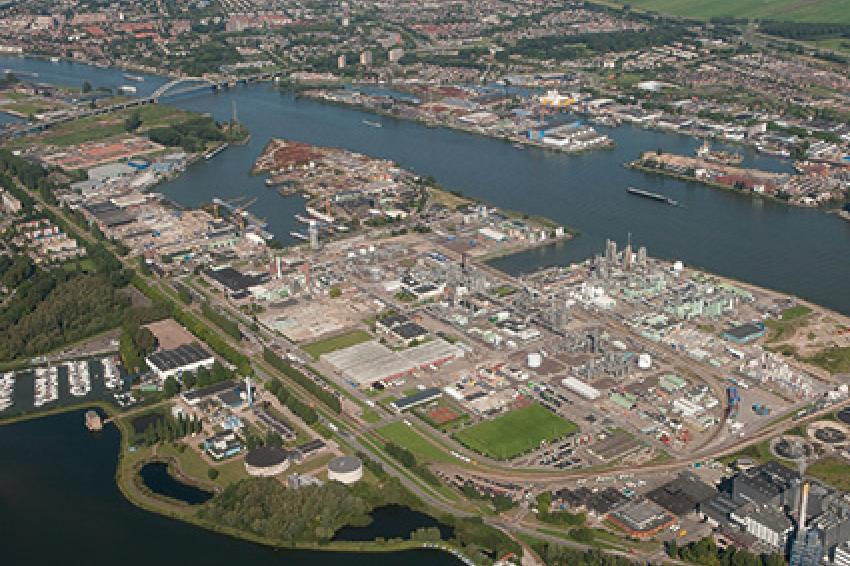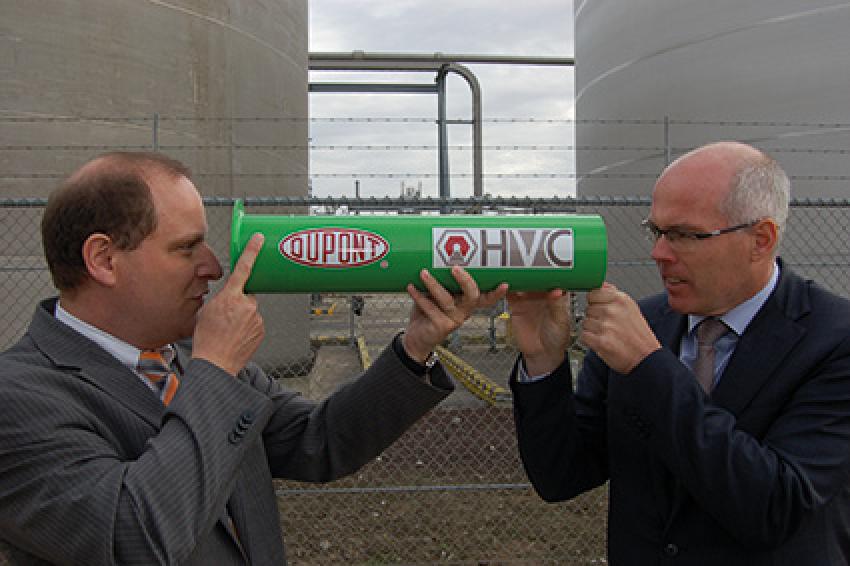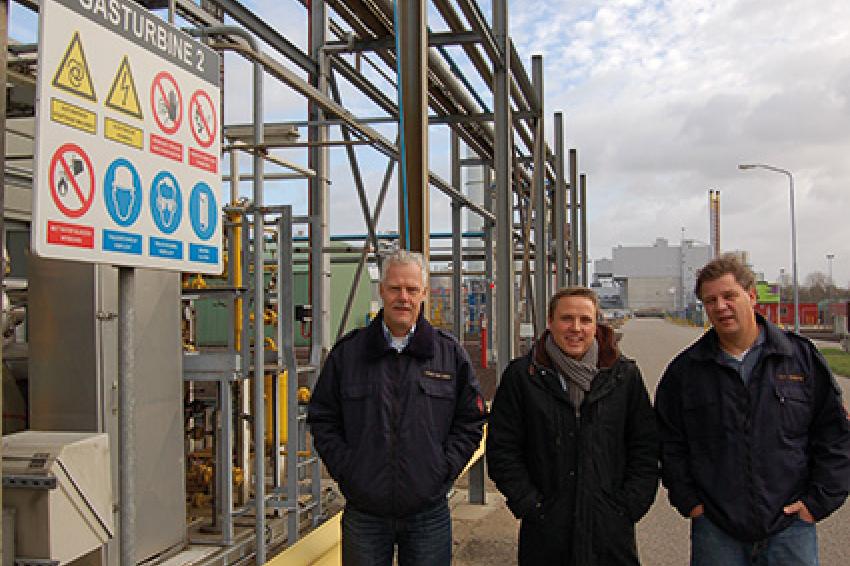A sustainable solution to environmental plant improvements
DuPont uses newest techniques for emission control, waste management and energy usage
Companies worldwide are working diligently to reduce energy use, water consumption and emissions both for cost cutting reasons and due to legislation. Global science company DuPont uses newest techniques when it comes to emission control, waste management and energy usage. The company views sustainable operations as key to long-term productivity.
"We see sustainable growth as a challenge," Paul Meyers, Site Manager, DuPont Dordrecht says. "A challenge to use resources intelligently, identify the most effective sustainability projects for our company and make the best decisions for our business and the environment in combination. We do not believe that sustainability, productivity and profitability are mutually exclusive."
Sustainability at DuPont Dordrecht
Among the 112 production plants operated by global science company DuPont, its Dordrecht site in the Netherlands is one of the ten largest. Spread over 55 hectares, its 880 employees and 150 permanent contractors produce polymers and fluoroproducts. The site has been ISO 14001 certified for over 10 years.
The European emissions trading system has meant Dordrecht has had to reduce emissions by 2% every year, to bring about a total reduction of 20% between 2010 and 2020.
The Sustainable Operations Concept
Developing a plan to continue to meet both European and national targets, and even improve on them, is not left up to each DuPont plant in isolation. Each site is part of a larger team that includes an energy champion for each of the 112 sites, Erik van Kempen in the case of Dordrecht. The energy champions hold monthly conference calls at European and global levels to discuss ideas and keep track of DuPont's global energy performance. They provide the business with regular dollar and power forecast savings, as well as progress reports. The target imposed by DuPont on itself is one of reducing energy costs by three per cent every year without inhibiting an increase in production.
Erik van Kempen achieves the three per cent with the help of the energy structure DuPont puts in place for every site, which is complemented by the site's environmental network. This structure has resulted in tangible changes at the Dordrecht plant. Over the last five years, the company has invested more than €15.09 million in environmental improvement projects.
Reducing Energy and CO2 Emissions
One of the most significant energy savings projects involves a collaboration with HVC, an incinerator of community waste that is adjacent to the DuPont plant in Dordrecht. It produces steam, which the incinerator converts to electricity. HVC came to an agreement with DuPont to sell steam to the Dordrecht site on weekends. It is a clear win-win. For DuPont, it has the dual benefit of saving fossil fuels (no need to run its own two co-generators on natural gas) and saving money.
Thanks to this project, Dordrecht's CO2 emissions will drop by roughly 50,000 tonnes of CO2 savings per year - roughly similar to the emissions produced by approx. 15,000 medium sized cars driving an average 20,000 km per year.
"A pipe in the air may not sound very spectacular," Erik van Kempen says, "but for DuPont, our collaboration with HVC means getting a step closer to achieving one of our internal sustainability objectives: saving 11% of energy by 2015."
These internal sustainability objectives form part of a rigorous set of targets DuPont has communicated to all its employees. The company offers incentives for ideas and projects through its DuPont Production System (DPS), continuous improvement processes and through its internal awards. Dordrecht won this award in 2008 for a project that increased steam production, reduced the need to cool water and resulted in a significant annual cost saving. Behind this is the simple modification of a distillation column. Previously, the column had consumed a lot of steam. By modifying it, the production team of impact-resistant Delrin plastic was able to save 16.7 k tonnes of steam annually and win 25% of the total steam needed by the Dordrecht site in other manufacturing processes. The relatively small investment resulted in a big payback.
Dordrecht has also introduced a real time dashboard signalling system in production operations, which notifies workers when energy usage is excessive. It reminds them to switch off unnecessary pumps, for example. One of the dashboards indicates the status of 25 process values relating to energy consumption. By influencing these values, the operators of the Delrin unit have been able to save energy worth €1m annually.
As a result of many of these projects, the Dordrecht site used over 14% less energy in 2012 to produce the same number of products as in 2005.
Decreasing Water Consumption
Water recycling is another of DuPont Dordrecht's key environmental policies. Delrin, for example, has managed to cut fresh water intake by 91,000 m3 by improving efficiency at the site's cooling tower. Paul Meyers explains: "Through the implementation of a water treatment programme and a sophisticated dosing system, we managed to reduce chloride concentration in the intake cooling water, almost doubling overall system efficiency." The water saving represents the equivalent to the average yearly water usage of 650 Dutch households.
"In addition to supporting our sustainability goals, this technology will also help us protect critical assets from corrosion, deposition and biological fouling", says Mr Meyers. "It will In addition to water reduction, the project improved safety at the site by reducing acid deliveries by truck from 130 to only 15 per year. This also has a positive impact on reducing CO2 emissions.
Table 1: Total water consumption by DuPont Dordrecht since 2006*
|
Year |
Total water consumption (m3) |
Reduction vs base year 2006 (%) |
|
2006 |
2,340,810 |
0% |
|
2007 |
2,223,152 |
5% |
|
2008 |
2,102,108 |
10% |
|
2009 |
1,756,380 |
25% |
|
2010 |
1,981,571 |
15% |
|
2011 |
1,843,626 |
21% |
|
2012 |
1,793,490 |
23% |
|
2013 |
1,685,606 |
28% |
(*These figures represent de-mineralized & drinking water)
Cutting Emissions and Recycling Simultaneously
Air emissions have generally fallen at the site over the last few years. A number of emission reducing projects have focused on hydrofluorocarbons and hydrogen fluoride. Thus, the exhaust gases from the fluoroproducts and the fluoroelastomer Viton plants have been sent to an incinerator. In this unique furnace, carbon fluorine burns waste gases at high temperatures and converts them into a useful product that is used in the toothpaste industry. A similar process is used in the Delrin part of the site, where a scrubber washes out all the substances that dissolve in water. Previously, there were minimal residual emissions into the ambient air. Now, the site has put in place a number of lines, which conduct those waste gases into an incinerator.
Other efforts, when loading and blending refrigerants, for example, have focused on improving recovery of residues using new vacuum and condensation techniques on containers returned by customers and on the increased use of leak proof connections so that fewer emissions are set free.
Sharing Sustainability Experience Globally
DuPont has found the most efficient approach to using resources sustainably requires an integrated environmental support structure for its sites. This structure ensures locations collaborate, sharing expertise and ideas, with the goals of improving productivity and environmental footprint. That in turn allows the company as a whole to benefit, making sustainability a factor in long-term productivity.
Contact
DuPont Intern. Operat. Sarl
2 Chemin du Pavillon
1218 Le Grand-Saconnex
+41/22/7175293







